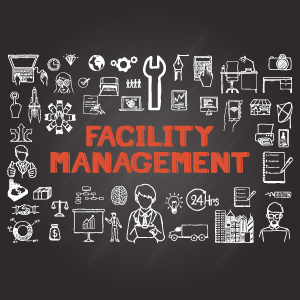Blog
Published: May 17, 2017
Tips for Reviewing the Progress in Your Energy Projects
Buildings today are full of hidden potential and more connected than ever – with access to valuable data and insight, new levels of efficiencies can be reached. In honor of World FM Day, we’ve compiled a few tips from our experts to help you...
Tips for Reviewing the Progress in Your Energy Projects
May 17, 2017

Optimizing your building’s energy efficiency is a seemingly never-ending process, or at least it can seem that way while your projects and planning are underway. Fortunately, reviewing the progress of your projects can significantly reduce the likelihood of unexpected issues and provide you with critical insight on the health of the equipment, needed adjustments, and overall status of the project itself.
Buildings today are full of hidden potential and more connected than ever – with access to valuable data and insight, new levels of efficiencies can be reached. In honor of World FM Day, we’ve compiled a few tips from our experts to help you review the progress of your energy projects to maximize the chance of success.
Be Proactive
In most situations, it’s better to be proactive than reactive, and this is especially true when it comes to your energy projects. When reviewing progress, you want to be sure that you are as proactive as possible with your maintenance, service and overall improvements (even replacement). Look for areas where problems might arise and take the initiative to safeguard your systems accordingly. This can help save time and money that might otherwise be spent dealing with occupant complaints and unexpected repairs down the road. It can also help you achieve a much greater level of energy efficiency that contributes to lower utility bills.
Look At the Basics
It sounds simple, and it is, but remember to consider the fundamentals when reviewing energy projects. When evaluating a project, start by analyzing your building and equipment data to see how the building is operating as the project is commencing. This information can help you identify potential problems and address them before they spiral out of control. It can also help you find additional areas that could be easily improved, such as longer-lasting sealant for doors and windows.
Know Your Building’s Peak Demand and Base Load
A thorough understanding of when your building consumes the most energy and how much energy that usually entails can make a big difference when you’re working to make your systems more energy efficient. When you know your peak demand, you know when your systems are under the most pressure to perform. For many office buildings, this time usually climbs during the typical working hours of the summer months, when the cooling system has to work more strenuously to keep the building at a cool temperature. This knowledge allows you to adjust the systems accordingly to ensure that they’re operating at maximum efficiency during those hours and helps improve cost-effectiveness by leveraging certain storage and meter tools that shift energy demand to off-peak hours.
Knowing your building’s base load is just as important. It’s pretty difficult to optimize your energy efficiency if you’re not 100% clear on what your building’s minimum running load is. You also need to know when and why it fluctuates. For example, just as the peak demand is usually higher in the summer, the base load of office buildings usually increases in the hotter months as well. Knowing this can make it much easier to spot potential issues with your projects, especially if you see something that may cause your systems to fall below base load requirements at certain times.
Minimize Your System Overrides
When reviewing the progress of any project, it’s tempting to dive right in whenever you see a problem. However, this isn’t the ideal way to fix an issue, especially when you’re trying to increase efficiency. It might seem odd to not fix something right away, but it’s much better to wait until you’ve done a full review before intervening with a system override that stops your automated controls. Frequent manual overrides aren’t good for a building’s controls and end up throwing a wrench into any streamlined automated processes in place. What’s worse, each override can have an unintended ripple effect on other systems that aren’t being worked on, making each one you do a potential risk for a much bigger headache. Make it a habit to have the complete picture of what needs to be adjusted before stepping in.
